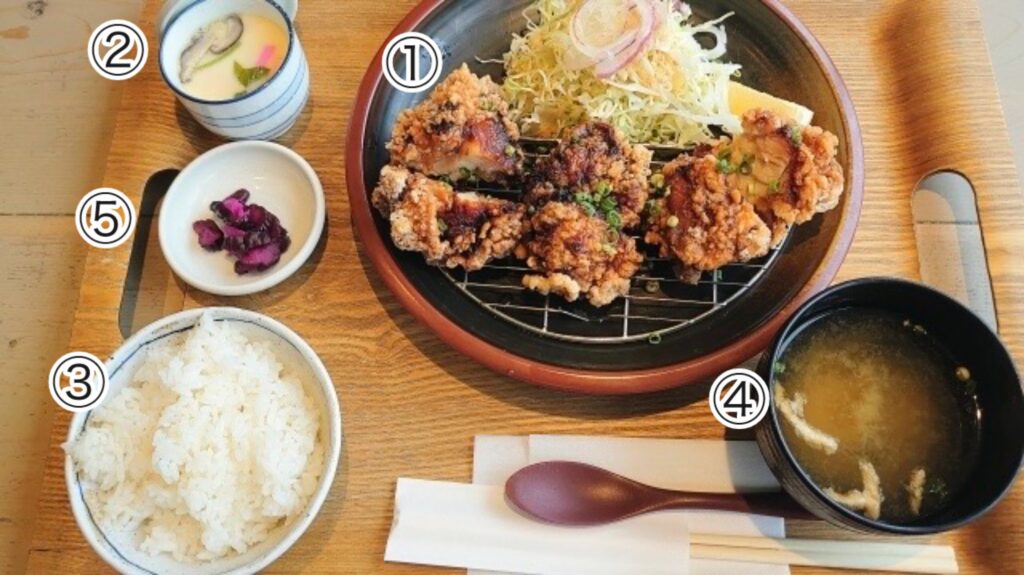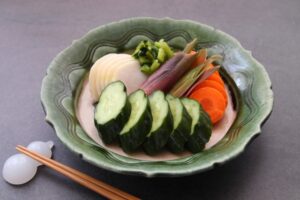What is Teishoku ??
Teishoku is a quintessential Japanese dining style, featuring a well-balanced meal set with a main dish, side dishes, Japanese rice, miso soup, and pickles. Known for its simplicity and nutritional value, teishoku is a beloved option in restaurants, cafeterias, and homes across Japan.
Known for its simplicity and satisfying portions, teishoku is also budget-friendly. Prices typically range from 700 to 1500 yen, making it an excellent option for everyday dining or for travelers seeking an authentic Japanese meal without overspending.
Key Features of Teishoku
Teishoku is characterized by its multiple components served together on a tray, providing a nutritionally complete and visually appealing meal. Its typical structure includes:

1.Main Dish (Shusai): Protein-based dishes like tonkatsu, grilled fish, or teriyaki chicken.
2.Side Dish (Fukusai): Small portions of vegetables, salads, or Japanese-style pickled dishes.
3.Rice (Gohan): Japan’s staple food, often served plain. Some places offer brown rice or mixed grains as an option.
4.Miso Soup (Miso Shiru): A comforting soup made with miso paste, often containing tofu, seaweed, or seasonal vegetables.
5.Pickles (Tsukemono): A small portion of pickled vegetables, such as takuan (pickled radish) or umeboshi (pickled plum), serving as a palate cleanser.
Popular Examples of Teishoku
1.Tonkatsu Teishoku
Tonkatsu Teishoku is crispy pork cutlet with rice, miso soup, and shredded cabbage.
2.Karaage Teishoku
Karaage Teishoku is juicy Japanese-style fried chicken served with rice and a side of pickles.
3.Yasai Itame Teishoku
Yasaiitame Teishoku is Stir-fried vegetables as the main dish, often paired with tofu or small servings of protein.
4.Shogayaki Teishoku
hogayaki Teishoku is Flavorful ginger pork stir-fry with rice and miso soup.
5.Sashimi Teishoku
Sashimi Teishoku is Freshly sliced raw fish, served with rice, soup, and pickled vegetables.
6.Hamburg Steak Teishoku
A hearty hamburger steak topped with demi-glace or grated radish sauce, served with rice, miso soup, and side dishes.
History of Teishoku
The concept of teishoku gained popularity during the post-war period as an affordable and nutritionally balanced meal. By the Showa era (1926–1989), many eateries across Japan began offering “teishoku” menus with various main dishes. It became a practical choice for workers and students seeking a filling meal at a reasonable price. Today, teishoku remains a cornerstone of Japanese dining culture.
Why Teishoku is Special
Nutritional Balance
The combination of protein, vegetables, and grains ensures a wholesome meal.
Satisfying Portions
Each element of the set meal complements the others, providing a fulfilling dining experience.
Customizable Options
Many restaurants allow diners to adjust portion sizes for rice or choose soup and side dishes according to their preferences.
Cultural Significance of Teishoku
Teishoku embodies the Japanese dining philosophy of “ichiju-sansai” (one soup and three dishes), which emphasizes balance and harmony in meals. It is a representation of everyday home-cooked meals in Japan, offering a glimpse into the country’s culinary traditions.
Whether enjoyed at a cozy family restaurant, a cafeteria, or a teishoku specialty shop, this set meal style reflects the heart of Japanese comfort food. It’s also a great way for travelers to explore local ingredients and flavors in a single, satisfying tray.

Comments